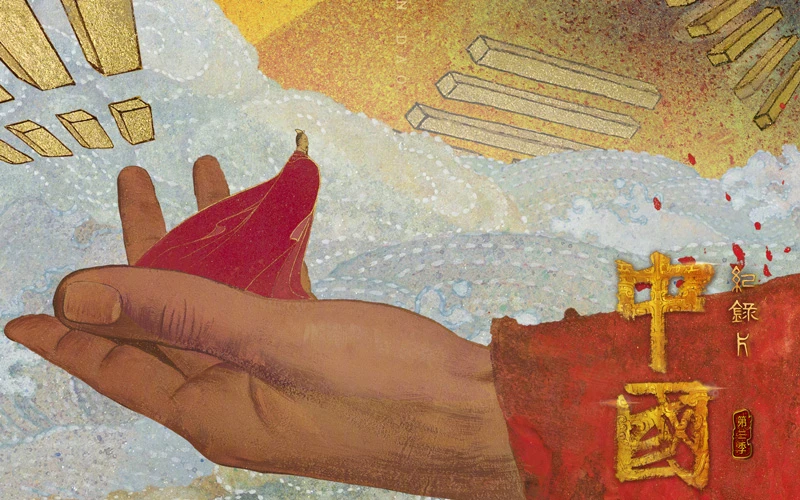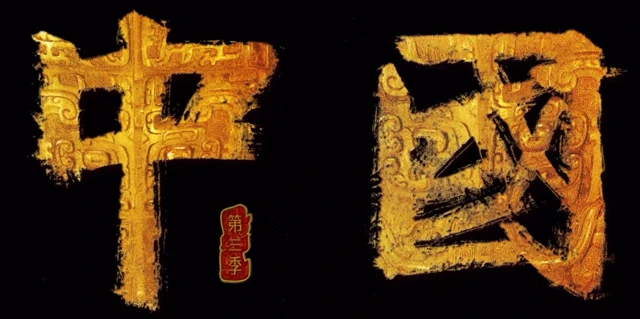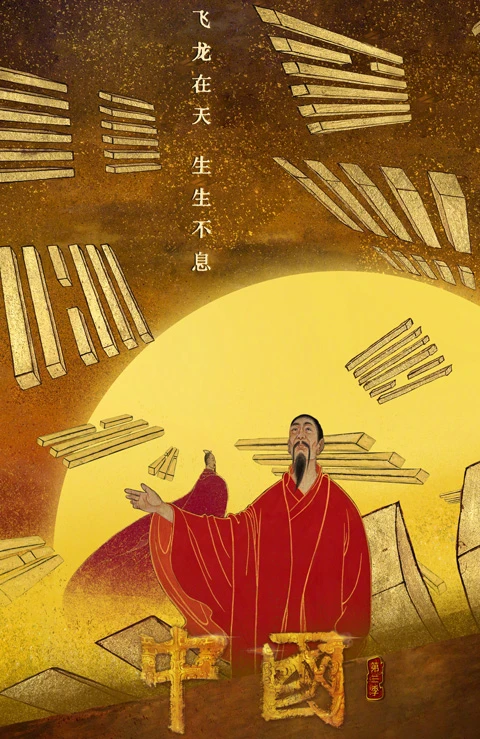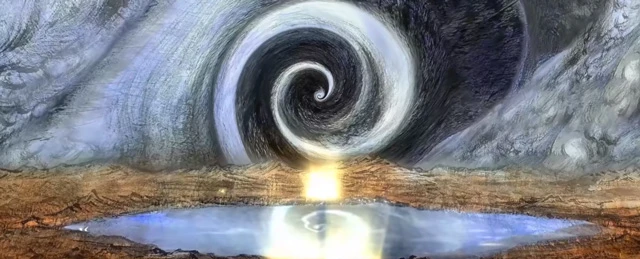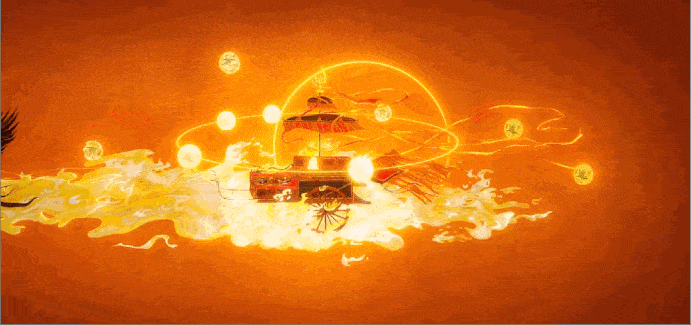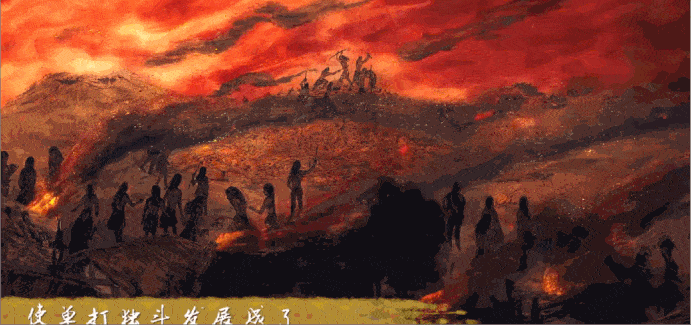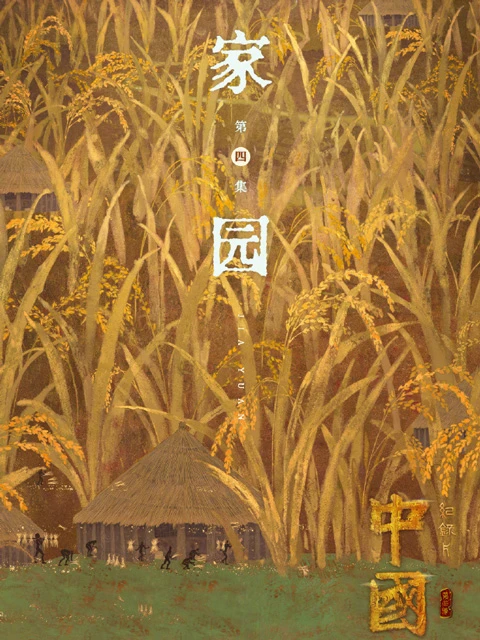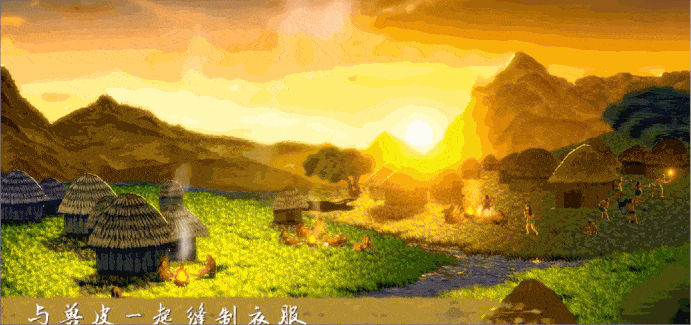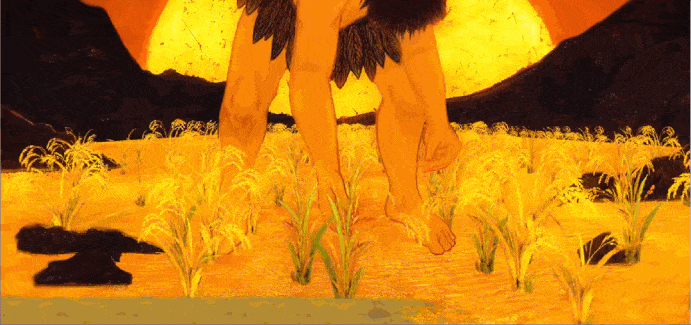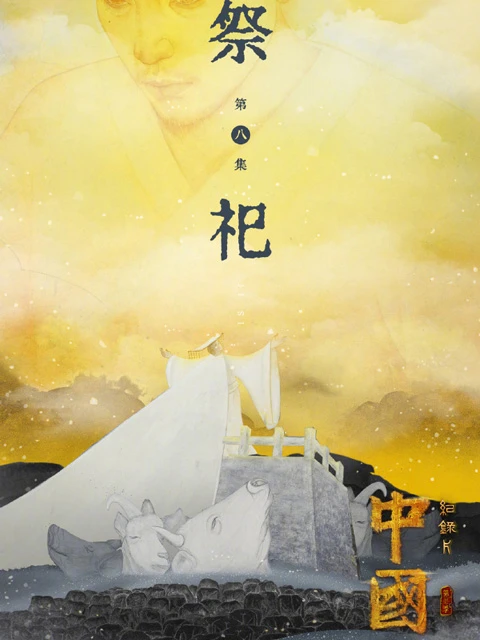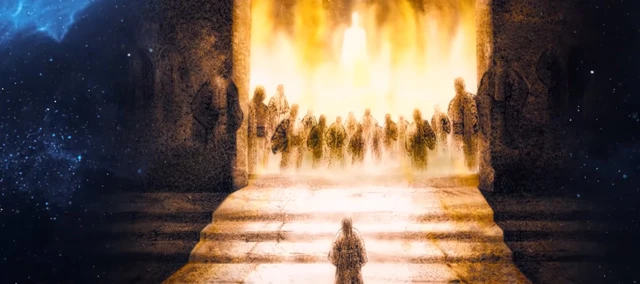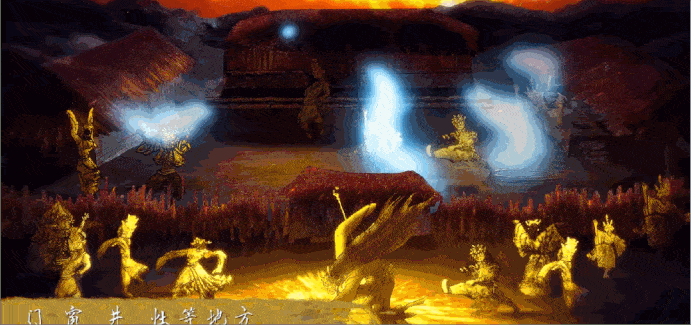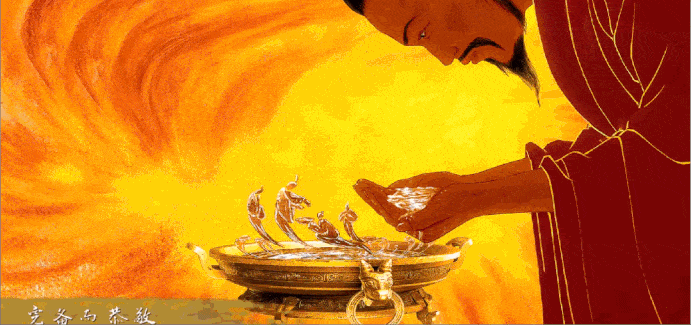From the Spring and Autumn period to the prosperous Tang Dynasty, from idealism to realism, the first two seasons of the epic documentary "China" made a strong entry into the realm of high-scoring documentaries, receiving unanimous acclaim. Unexpectedly, the "China Season 3" took a different approach, starting from mythology and embarking on a reverse journey through time: from early myths to ancient history, from primitive society to agrarian civilization, the establishment of the state, and the development of rites, allowing us to glimpse the civilization codes shimmering in the galaxy of history.
What is even more noteworthy, the "China Season 3" incorporated a large number of the latest archaeological discoveries and invited 183 outstanding young artists to create 443 Chinese paintings. Through special effects, the paintings came to life, combining storytelling and aesthetics to provide us with an artistic feast.
Unique realm of romantic imagination
Every civilization has its own creator god. Just like a prelude to life, in Chinese mythology, Pangu is the god who broke the chaos, bringing light to the world, creating the first mountain and the first river. Nuwa, with a human head and a snake body, represents the gods of eternal life and reproduction, giving birth to humanity.
When it comes to the birth of humanity, the story of Nuwa undoubtedly transcends: in Greek mythology, the god Prometheus created humans from water and clay; in the biblical myth, Adam and Eve together bore humanity; only in Chinese mythology, the sacred task of creating humans was given to a goddess to accomplish independently. To some extent, this is a tribute and record of the female role in bearing offspring.
Another example of different perspectives is the chapter on the "Great Flood." In over five hundred known flood myths worldwide, the majority attribute the cause of this disaster to the punishment of humans by the gods. However, in Chinese mythology, humans and gods are not in opposition; the gods are there to help and save humanity. Therefore, faced with the flood, Chinese mythology focuses on flood control, emphasizing that the starting point of Chinese mythology has always been humanity, not just the gods.
Looking at world mythology, this is exceedingly rare. It is based on this thinking that Nuwa, in times of imbalance in the world order and human suffering, offered a unique Chinese solution: by finding soils of five colors - white, blue, black, red, and yellow - each representing gold, wood, water, fire, and earth, she wielded divine power to create a five-colored stone, restoring the world order. This sentiment towards the universe is unique to the Chinese and a form of romance exclusive to China.
Having established the origins of the universe and humanity, Chinese mythology then delves into new mysteries, such as the consciousness that distinguishes humans from other species and its origins. This is the essence of the myth of Fuxi. Inspired by the sun, moon, mountains, and rivers, Fuxi observed and contemplated for many days and nights, creating eight symbols corresponding to the natural attributes of heaven, earth, thunder, wind, water, fire, mountains, and river, symbolizing the members of the human family.
This is a typical expression of the unity of heaven and humanity, also reflecting the Chinese value of family. Sun God Xihe and Moon Goddess Changxi come from the same family. Xihe gave birth to ten suns, taking turns to illuminate the world, while Changxi bore twelve daughters, each guarding and circulating through the night, forming the twelve months of the year. People project their cherished families and blood ties onto mythology, initiating a preliminary contemplation of the universe and all things.
At this point, the ancient people began to perceive relationships between individuals. Through reflections on warfare and competition, people found a way to secure a stable life: uniting multiple tribes to ensure the rational distribution of resources. Thus, the stories of the Yellow Emperor and the Flame Emperor were born. Through the whimsical imagination of mythology, we discover that although people imbue it with different meanings and romance, fundamentally, they have always been addressing the helplessness and desires of humanity, which is the cradle of civilization.
Agriculture, wisdom of ancestors
If myths are humanity's exploration of the universe and inner desires, then food is the most crucial aspect of survival. Throughout the evolutionary history of mankind, the state of human existence has been based on food. The repeated migrations of people have been driven by the necessity to sustain life through food.
Nevertheless, humanity does not passively wait for fate. Amid continuous migrations, people began inventing tools, learning to hunt, expanding the sources of food beyond fruits, roots, and seeds of plants. Simultaneously, they mastered the use of fire and started consuming cooked food.
While meat consumption provided more energy, the looming dangers persisted due to power imbalances. To evade natural disasters and wild beasts, the destinations of migrations were no longer solely determined by food availability.
Eight thousand years ago, a group of people arrived at a plateau surrounded by mountains on three sides, with a river flowing nearby. This natural setting served as a barrier against floods and wild animals, making it an ideal living place for the people of that time. This place was known as Mount Ci.
Due to its suitability for habitation, after some time, some of the early settlers, following their migration habits, continued their journey, while others chose to remain on this land. Transitioning from migration to settlement was both an adventure and the beginning of intertwining lives with the land. People began raising dogs, pigs, sheep, cattle, horses, and chickens, providing not only a stable meat source but also productivity.
Subsequently, people ventured into agriculture, domesticating plants just as they had domesticated animals. Those in the north selected setaria viridis, while those in the south chose oryza rufipogon. Through continuous experimentation, seeds were awakened, agriculture flourished, propelling the advancement of civilization.
In the Luoyang Basin, where twenty to thirty thousand people gathered, the earliest traces of China were inscribed. The residents, originating from upstream of the Yellow River and the south, brought along diverse customs and regional culinary specialties on their journey.
At the Erlitou site, one can witness the millet, sorghum, and soybeans native to the north, the rice from the south, and even wheat brought from afar, creating a harmonious blend of "five grains." The diversification of food crops increased the overall food production and reduced the risk factors associated with monoculture. The stable development of agriculture attracted people from all directions to converge, collectively constructing a city where architecture, culture, and order could flourish, thereby shaping civilization.
The culture of etiquette fostering a thriving civilization
The home is the vessel of civilization, and the continuous iteration of rituals such as sacrifices and ceremonial music gives civilization a more advanced form. In the classics, the earliest recorded ancestor sacrifice in Shang clan history is attributed to the Shang Jia Wei (上甲微) from the early Shang period. Prior to Shang Jia Wei, the objects of worship for the Chinese were mainly nature gods, which evolved into different forms of sacrificial rites.
As Shang Jia Wei led the Shang clan, focusing on animal husbandry and trade, to prosperity and established a certain status in the Central Plains, there was always a lingering issue - the ascension of the father's soul. In the minds of the merchants, it was believed that after death, individuals would reunite with their ancestors in the heavens, but if the death was unnatural, the lingering spirit due to intense resentment would bring misfortune to the living.
Shang Jia Wei believed that the spirit of his deceased father lingered outside the house, and in order to send his father's spirit away, he resorted to a sacrificial ritual. Unlike previous practices, he decided to utilize a more energetic approach that could express sincerity and bid farewell to his father's spirit: in the courtyard, a group of spirit mediums wearing special masks performed a dance, modified by Shang Jia Wei to expel wild beasts, while making offerings at the doors, windows, wells, and stoves. This was known as the ritual of "Xi Wu Si (裼五祀)".
In later generations, "Xi" and "Wu Si" were separated, giving rise to two types of ceremonies:
- "Xi" became the origin of the widely spread Nuo ceremony in many parts of China, used for exorcism and warding off epidemics;
- "Wu Si" evolved into the worship of five household gods - the door god, hearth god, stove god, well god, and land god - to comfort the deceased and pray for blessings for the living.
The ancestral worship ritual initiated by Shang Jia Wei, after undergoing changes, has become a cultural tradition highly valued by the Chinese people. Of course, this is just one manifestation of ritual in the melodious history. In different contexts, there are other forms of rituals. For instance, during the Zhou Dynasty, before conducting ceremonies such as sacrifices and feasts, there was a preliminary washing ceremony: a slave poured clean water for the guests, while another slave knelt before the guests with a basin to catch the water dripping from the guests' hands as they washed. After the symbolic hand washing, another servant would offer a towel. The vessel used for the washing ceremony was a precious bronze basin, and with its coordination, this simple ritual became complete and respectful.
This exemplifies the refinement of ritual practices and further development of Chinese civilization. While the third season of "China" concludes with ritual and music, leaving us with a sense of resonance in hearts, the formation of a land of etiquette embodies the wisdom of countless ancestors. From the spiritual to the material, each aspect is indispensable. It is precisely this internal and external integration that ultimately forges a unique civilization.
